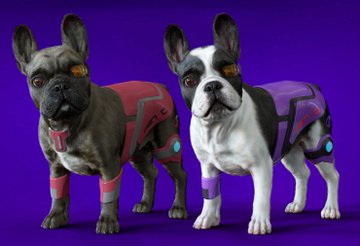
Digital pets are nothing new: for as long as we’ve been hanging out online, people have been trying to sell us pixelated counterparts of our real-life animals. And now, as the next generation of the internet looms — Web3 — a new crop of startups is winning investment to bring our furry friends into the metaverse.
So, is the idea of the meta-mutt just another flash in the hype pan, or can they truly replace man’s best friend with a solid business opportunity?
History is on the meta-pets’ side, with major commercial hits like Tamagotchi, a 90s handheld “virtual reality” pet, selling 83m units globally as of March 2021.
Yet another case study is pet simulation game Nintendogs; the Nintendo DS handheld console game (which was discontinued in 2014) has sold a cool 24m copies, with users who couldn’t own real-life dogs loving the experience.
We spoke to a few of the “petaverse” founders who are already putting VC money to work, as they try to bring man’s best friend into the metaverse.
Hardware killed the cat
Susan Cummings is cofounder of Cardiff-based Tiny Rebel Games, which recently raised a $7m seed round to build Petaverse Network. It designs artificially intelligent cats, which the company promises will work across different metaverses.
The idea is that your pet can accompany you wherever you go in the virtual world, joining you in anything from a work meeting to a quest to fell an ancient dragon. She says that, when compared with prior successes like Nintendogs, the metaverse presents one big advantage: these animals aren’t prisoners to hardware.
“The problem with Nintendogs is that they’re forever confined to the [Nintendo] DS… It’s a pity they couldn’t be separated from that device,” Cummings says. A pity — and a lost business opportunity.
